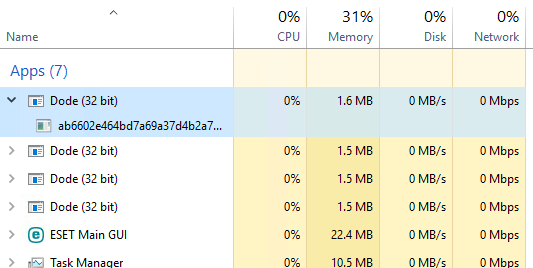

Other firms like Symantec, Crowdstrike, and Darktrace use it too, but Ashkenazy and Zini didn’t test those systems and it’s not clear they would suffer from the same bias, since they’re architected differently and don’t rely as heavily on machine learning to detect malicious files as the Cylance system does. But the company’s business is growing rapidly last year it obtained $120 million in funding and this year was acquired by BlackBerry in a $1.4 billion deal.Ĭylance’s PROTECT isn’t the only security product that uses artificial intelligence. Their crime is calling what they did AI,” he told Motherboard.Ĭylance ranks about eight among the top ten endpoint security companies, after Symantec, Kaspersky and TrendMicro. “Their crime is not that they coded AI poorly. Though he doesn’t fault Cylance for making a mistake, he does fault the company for hyping the AI in their marketing when the system contains a bias that essentially undermines the AI. “And it usually works pretty well, until you have some corner cases where you can’t just make the model. “Usually you try to work with machine learning to cover … things which are widely unknown or you cannot do manually,” said the expert, who asked to remain anonymous because his company doesn’t authorize him to speak with media.

I suspect it’ll get better at this kind of thing over time.”Ī machine learning expert Motherboard spoke to agrees. “It mostly shows that you can’t rely on AI on its own…. If you make it look like benign files, then you can do this,” Grooten told Motherboard. Their crime is calling what they did AI." Martijn Grooten, editor of Virus Bulletin, which conducts tests and reviews of malware detection programs, called the reverse-engineering research impressive and technically interesting, but wasn’t surprised by the findings. The researchers tested their attack against the WannaCry ransomware that crippled hospitals and businesses around the world in 2017, as well as the more recent Samsam ransomware, the popular Mimikatz hacking tool, and hundreds of other known malicious files-adding the same benign strings from the gaming program to each malicious file-and in nearly all cases, they were able to trick the Cylance engine. “After around four years of super hype, I think this is a humbling example of how the approach provides a new attack surface that was not possible with legacy.

“As far as I know, this is a world-first, proven global attack on the ML mechanism of a security company,” says Adi Ashkenazy, CEO of the Sydney-based company Skylight Cyber, who conducted the research with CTO Shahar Zini. The benign strings they used came from an online gaming program, which they have declined to name publicly so that Cylance will have a chance to fix the problem before hackers exploit it. It involves simply taking strings from a non-malicious file and appending them to a malicious one, tricking the system into thinking the malicious file is benign. Instead, the researchers developed a “global bypass” method that works with almost any malware to fool the Cylance engine. But researchers in Australia say they’ve found a way to subvert the machine-learning algorithm in PROTECT and cause it to falsely tag already known malware as “goodware.” The method doesn’t involve altering the malicious code, as hackers generally do to evade detection.


 0 kommentar(er)
0 kommentar(er)
